Blackberry Blueberry Jam (Black and Blue Jam)
This post may contain affiliate links. Read my full disclosure here.
When it comes to jam and jelly making, I love experimenting with unusual mixes. Blackberry and blueberry jams are good, but blackberry blueberry jam is exceptional. We share the recipe, along with tips for working with the berries.
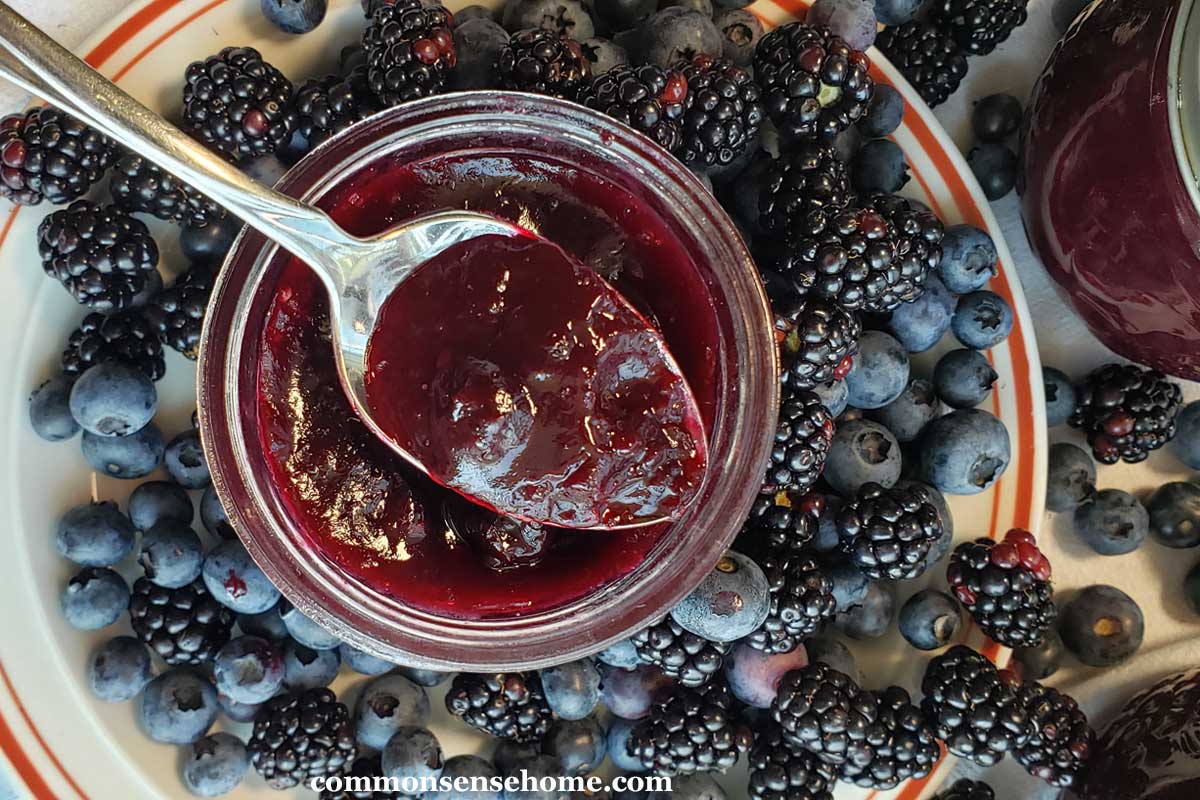
We grow a lot of different fruits on our homestead, so it’s easy to be creative. This is one of the mixes that transformed into more than the sum of its parts. Somehow, the blend of blackberry puree and mashed blueberries tastes more like a blueberry pie than jam. Since our blackberries are generally more productive than our blueberries, it’s a great option to stretch the blueberries.
Table of Contents
How to Make Blackberry Blueberry Jam
This low sugar blackberry blueberry jam recipe uses Pomona’s Universal Pectin, so it gels with less sugar. You can find Pomona’s Pectin in most natural grocers, or order online. One package of Pomona’s Pectin makes several batches of jam or jelly.
Each package of Pomona’s Pectin includes a packet of pectin, and a packet of calcium powder. The calcium allows the jam to gel with low or no sugar, so you can use other sweeteners, like stevia, if needed.
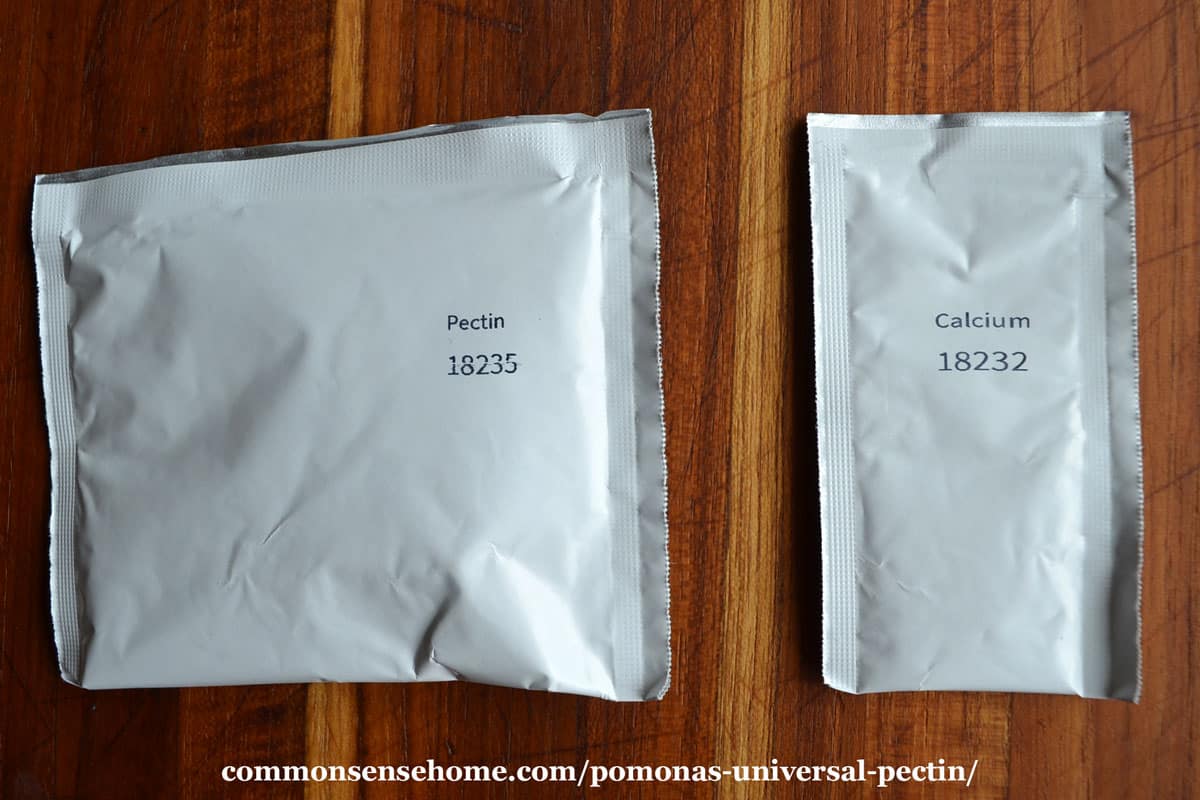
When you prepare the jam, you mix the calcium powder with water. Then, you add some of this calcium water to your berry blend. Learn more about Pomona’s Pectin and how pectin works here.
When you’re ready to make blackberry blueberry jam, wash and rinse your jars. Let the jars stand in hot water. (I put them in my water bath canner as it is heating up.) Bring lids to simmer and let hem stand in hot water.
Prepare the calcium water. Put 1/2 teaspoon of calcium water and 1/2 cup of water in a small jar and shake well.
Prepare the berries. You need 4 cups of mashed berries total. This is roughly a quart each of fresh blueberries and fresh blackberries.
Our blackberries are very seedy, so we cooked down about one and a half quarts blackberries and then used a food strainer to make blackberry puree. Then we put the puree into a large measuring cup, and added enough blueberries to make four cups total.
Alternatively, you can smash your fresh berries with a potato masher and measure out four cups of mashed berries. (That’s two cups each of mashed blackberries and mashed blueberries.)
Add fruit mash, 1/4 cup lemon juice, and 2 teaspoons calcium water to a medium stock pot and mix well.
Measure 1/2 cup honey or 1 cup sugar into a separate bowl. Thoroughly mix in 2 teaspoons of pectin powder to the honey or sugar.
Bring the fruit mixture to a boil and add the pectin/sweetener mix. Stir vigorously for 1 to 2 minutes to dissolve the pectin while the mixture returns to a full boil. Remove from heat.
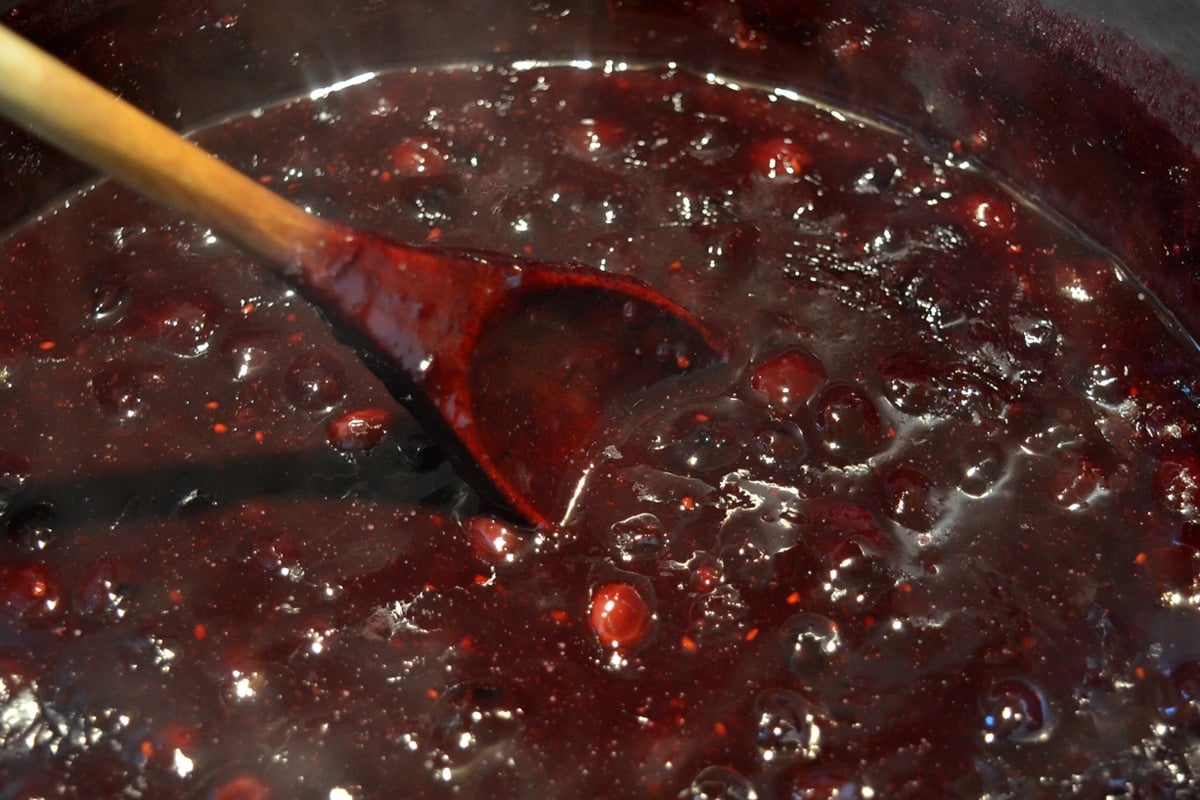
Fill one cup jars to 1/4″ of top (1/4 inch headspace). Wipe the rims clean and screw on the two piece canning lids. place filled jars into a boiling water bath canner. Boil for 10 minutes, adding 1 minute extra for every 1000 feet above sea level.
Remove the jars from the canner and place on a towel on the counter top. Allow the jars to cool completely. Remove the rings and check seals. Date and label. Store in a cool location, out of direct sunlight. For best quality, use within 18 months.
Once you open the jars, keep the product in the refrigerator. Use opened jars within two to three weeks.
Would you like to save this?
Handling Blackberries and Blueberries for Jam
Blackberry blueberry jam is all about the berries. For this recipe, you can start with fresh or previously frozen berries.
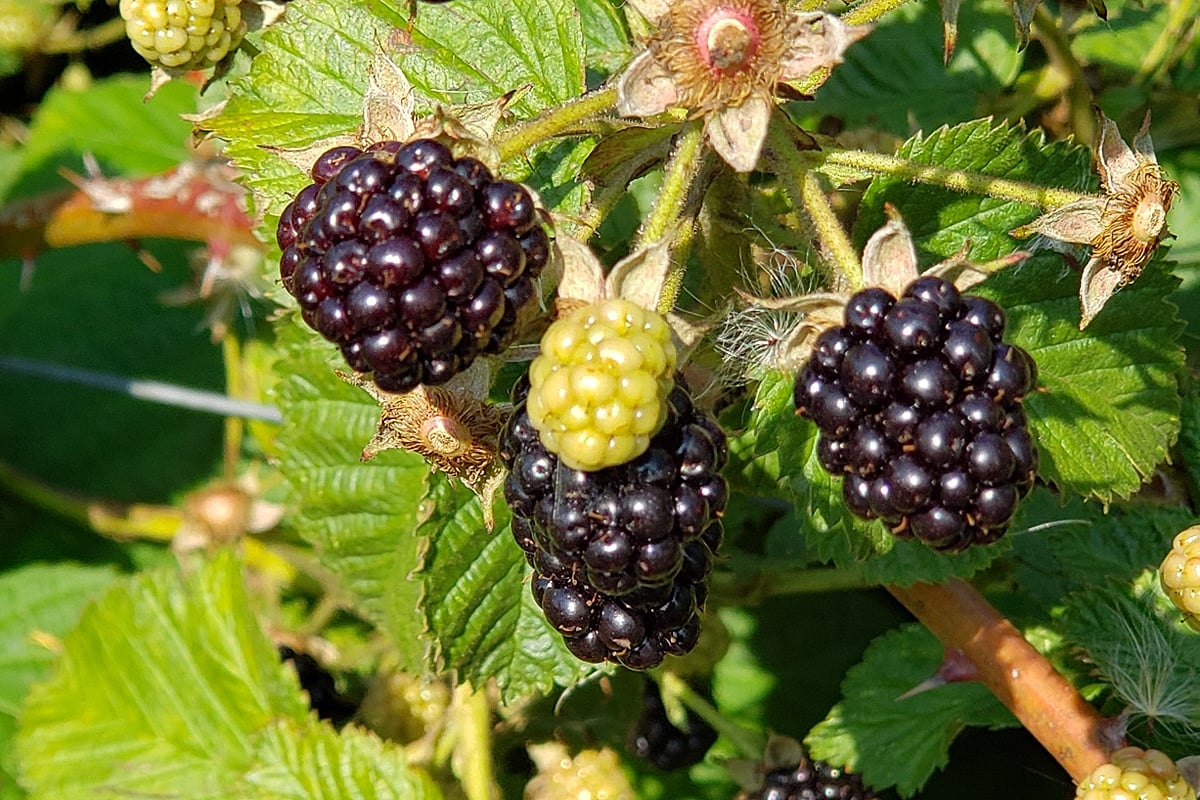
Blackberries spoil quickly, so it’s best to use them as soon as possible after harvest. They’re likely to last only two to three days in the refrigerator before molding (if that). If you spot any moldy berries, remove them promptly to keep the mold from spreading.
Do not wash your berries until you are ready to use them. Rinse the berries with cold water in a colander when you’re ready to make jam.
For storage, place a paper towel or absorbent cloth in the bottom of your container to soak up excess moisture. Use a shallow container with good air circulation, like the clamshell storage containers from the store, or a shallow bowl. If you stack berries too deep, the bottom ones get smashes and readily spoil.
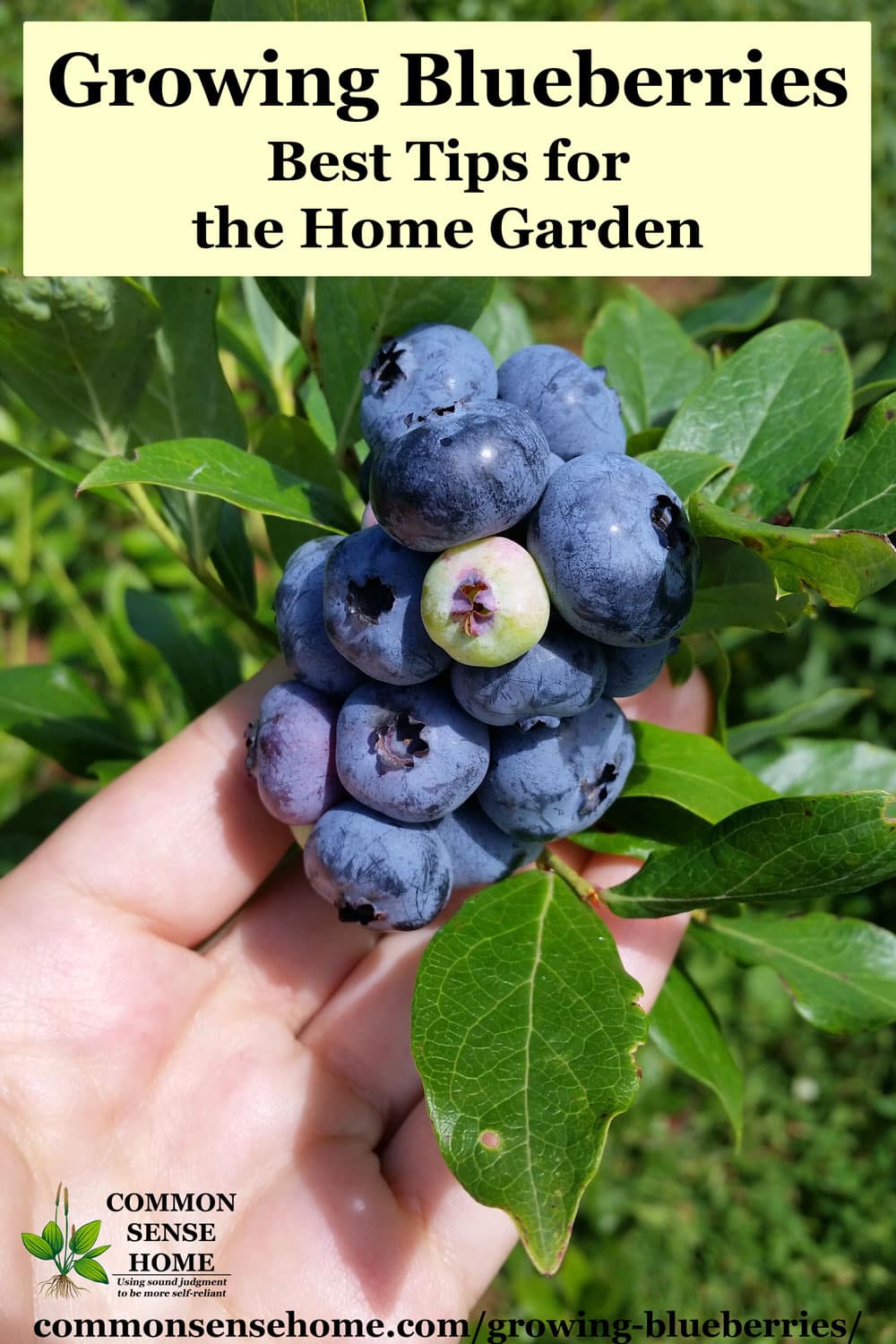
Blueberries will last up to week in the refrigerator. Like blackberries, it’s best to store them in shallow containers with good air circulation. A moisture absorber in the bottom won’t hurt, but isn’t as important as it is for blackberries.
If you don’t have time to make jam right away, rinse the berries and pat them dry. Spread them in a single layer on a baking sheet and freeze them, and then pack them in freezer safe containers.
Sour Blackberries versus Sweet Blackberries
Back when I was a little girl, the only blackberries I remember were the wild ones. Now, there are many varieties, with a range of sweetness and acidity. Those with a lower pH are called “sour blackberries”, and those with a higher pH are called “sweet blackberries”.
I have not come across a list of varieties in each category. Our berries are tart with monster thorns, so I’d place them in the “sour” group. The blackberries they sell at Costco are big, soft, and mild in flavor, so I’d place them in the “sweet” group.
If you’re not sure if you’re working with sour or sweet berries, go ahead and add extra acid. it won’t hurt anything. To make sure your jam is safe for water bath or steam canning, the pH must be at or below 4.6. Some of the “sweet” types may be right around the 4.6 mark, so a little added lemon juice ensures your blackberry blueberry jam is safe and helps it to set.
PrintBlackberry Blueberry Jam (Black and Blue Jam)
The rich flavor of this blackberry blueberry jam is sure to please.
Ingredients
- 2 cups mashed blackberries or blackberry puree (about 1 to 1 1/2 quarts fresh berries)
- 2 cups mashed blueberries (about 1 quart fresh berries)
- 1/4 cup lemon juice
- 2 teaspoons calcium water (included with Pomona’s Universal Pectin)
- 2 teaspoons Pomona’s Universal Pectin Powder
- 1/2 cup honey or 1 cup granulated sugar
Instructions
- Prepare the canner and wash and rinse your jars. Let the jars stand in hot water. (I put them in my water bath canner as it is heating up.) Bring lids to simmer and let them stand in hot water.
- Prepare the calcium water. Put 1/2 teaspoon of calcium water and 1/2 cup of water in a small jar and shake well.
- Prepare two cups of mashed blackberries or blackberry pure and two cups of mashed blueberries.
- Add fruit mash, 1/4 cup lemon juice, and 2 teaspoons calcium water to a medium stock pot and mix well.
- Measure 1/2 cup honey or 1 cup sugar into a separate bowl. Thoroughly mix in 2 teaspoons of pectin powder to the honey or sugar.
- Bring the fruit mixture to a boil and add the pectin/sweetener mix. Stir vigorously for 1 to 2 minutes to dissolve the pectin while the mixture returns to a full boil. Remove from heat.
- Fill one cup jars to 1/4″ of top (1/4 inch headspace). Wipe the rims clean and screw on the two piece canning lids. Place filled jars into a boiling water bath canner. Boil for 10 minutes, adding 1 minute extra for every 1000 feet above sea level.
- Remove the jars from the canner and place on a towel on the counter top. Allow the jars to cool completely. Remove the rings and check seals. Date and label. Store in a cool location, out of direct sunlight. For best quality, use within 18 months.
Notes
Once you open the jars, keep the product in the refrigerator. Use opened jars within two to three weeks.
Alternatively, you may also process the jam for 10 minutes in a steam canner, or freeze the jam.

More Jam and Jelly Recipes
Some of the best parts of making homemade jam are recipes with more fruit and different fruit combinations. These are some of our favorites.
- Blueberry Peach Jam
- Blueberry Pear Jam
- Blushing Peach Jam
- Carrot Cake Jam
- Plum Jam with Walnuts and Rum

This article is written by Laurie Neverman. Laurie grew up in the kitchen, learning baking and home cooking from her momma. At age 15, she and her mom and two sisters created Irene’s Custom Cakes & Catering. This was her summer job through most of high school and college.





